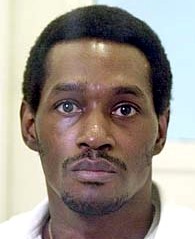|
SUPREME COURT OF THE UNITED
STATES
Syllabus
GRAHAM v. COLLINS, DIRECTOR, TEXAS DEPARTMENT
OF CRIMINAL JUSTICE, INSTITUTIONAL DIVISION
certiorari to the united states court of appeals
for the fifth circuit
No. 91-7580.
Argued October 14, 1992 -- Decided January 25,
1993
Petitioner Graham's capital murder conviction
and death sentence became final in 1984. After unsuccessfully
seeking postconviction relief in the Texas state courts, he filed
this habeas corpus action in Federal District Court, alleging,
inter alia, that the three "special issues" his sentencing jury
was required to answer under the state capital sentencing statute
then in existence prevented the jury from giving effect,
consistent with the Eighth and Fourteenth Amendments, to
mitigating evidence of his youth, unstable family background, and
positive character traits. In affirming the District Court's
denial of relief, the Court of Appeals reviewed this Court's
holdings on the constitutional requirement that a sentencer be
permitted to consider and act upon any relevant mitigating
evidence put forth by a capital defendant, and then ruled that
Graham's jury could give adequate mitigating effect to the
evidence in question by way of answering the special issues.
Held: Graham's claim is barred because the
relief he seeks would require announcement of a new rule of
constitutional law, in contravention of the principles set forth
in Teague v. Lane, 489 U.S. 288, 301 (plurality opinion). Pp.
5-17.
(a) A holding that was not "dictated by
precedent existing at the time the defendant's conviction became
final" constitutes a "new rule," ibid., which, absent the
applicability of one of two exceptions, cannot be applied or
announced in a case on collateral review, Penry v. Lynaugh, 492
U.S. 302, 313. Thus, the determinative question is whether
reasonable jurists hearing Graham's claim in 1984 "would have felt
compelled by existing precedent" to rule in his favor. SeeSaffle
v. Parks, 494 U.S. 484, 488. Pp. 5-6.
(b) It cannot be said that reasonable jurists
hearing Graham's claim in 1984 would have felt that existing
precedent "dictated" vacatur of his death sentence within Teague's
meaning. To the contrary, the joint opinion of Justices Stewart,
Powell, and Stevens, in Jurek v. Texas, 428 U.S. 262, 270-276,
could reasonably be read as having upheld the constitutionality of
the very statutory scheme under which Graham was sentenced,
including the so called "special issues," only after being
satisfied that the petitioner's mitigating evidence, including his
age, would be given constitutionally adequate consideration in the
course of the jury's deliberation on the special issues. Moreover,
Lockett v. Ohio, 438 U.S. 586, 605-606 (plurality opinion),
expressly embraced the Jurek holding, and Eddings v. Oklahoma, 455
U.S. 104, signaled no retreat from that conclusion. Thus, it is
likely that reasonable jurists in 1984 would have found that,
under these cases, the Texas statute satisfied the commands of the
Eighth Amendment: it permitted Graham to place before the jury
whatever mitigating evidence he could show, including his age,
while focusing the jury's attention upon what that evidence
revealed about his capacity for deliberation and prospects for
rehabilitation. Nothing in this Court's post-1984 cases, to the
extent they are relevant, would undermine this analysis. Even if
Penry, supra, upon which Graham chiefly relies, reasonably could
be read to suggest that his mitigating evidence was not adequately
considered under the Texas procedures, that does not answer the
determinative question under Teague. Pp. 6-16.
(c) The new rule that Graham seeks would not
fall within either of the Teague exceptions. The first exception
plainly has no application here because Graham's rule would
neither decriminalize a class of conduct nor prohibit the
imposition of capital punishment on a particular class of persons.
See Saffle, supra, at 495. The second exception, for watershed
rules implicating fundamental fairness and accuracy, is also
inapplicable, since denying Graham special jury instructions
concerning his mitigating evidence would not seriously diminish
the likelihood of obtaining an accurate determination in his
sentencing proceeding. See Butler v. McKellar, 494 U.S. 407, 416.
Pp. 16-17.
950 F. 2d 1009, affirmed.
White, J., delivered the opinion of the Court,
in which Rehnquist, C. J., and Scalia, Kennedy, and Thomas, JJ.,
joined. Thomas, J., filed a concurring opinion. Stevens, J., filed
a dissenting opinion. Souter, J., filed a dissenting opinion, in
which Blackmun, Stevens, and O'Connor, JJ., joined. |

